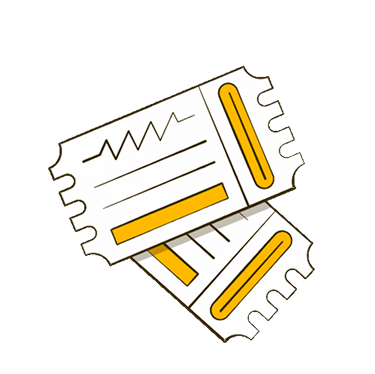You’ve clicked “Enter Now” on an online raffle—maybe once, maybe hundreds of times. But have you ever wondered what actually happens behind the scenes after that?
Online raffles might feel a little mysterious, but they’re powered by real tech, clear processes, and (at least with legit sites) a whole lot of fairness. Understanding how things work can give you more confidence in your entries—and maybe even help you win smarter.
Let’s pull back the curtain on what really happens after you enter a raffle online.
Step One: Your Entry Gets Logged
The moment you hit that big shiny “Enter” button, your information—usually your name, email, and sometimes location—is securely submitted into the raffle system. On legit sites, your data is encrypted and only used for raffle-related communication.
Each raffle platform has its own system for recording entries. Some assign you a digital ticket number. Others just track your unique user ID and timestamp.
Most daily raffles only allow one entry per person per day, so systems automatically check for duplicates to keep it fair.
Step Two: The Entry Pool Builds
Once the raffle opens, entries begin to pile up. Some raffles gather thousands of entries per day, while niche giveaways may only get a few hundred. That total entry pool is what determines your odds.
More entries = lower odds, but bigger raffles often have bigger prizes.
And here’s the good news: daily raffles with smaller, more frequent prizes often have way better odds than one-time mega sweepstakes.
Step Three: The Drawing Process Begins
Once the raffle closes (whether it’s a daily, weekly, or one-time drawing), the real magic happens—drawing the winner. This is done using a system called a random number generator (RNG).
What’s a Random Number Generator?
It’s a digital tool that selects a winner purely by chance. Each entry is given a number, and the RNG picks one at random. No human picks favorites. No bots sneak ahead. Just pure, unbiased selection.
The drawing typically happens automatically at the end of each raffle period—often at midnight or the next business day.
Some raffle sites use third-party RNG tools to increase transparency. Others build secure RNG systems directly into their platform.
Step Four: Verifying the Winner
Once a winner is chosen, the system usually does a quick check to make sure the entry is valid.
This might include:
- Making sure they didn’t break any rules (like entering more than allowed)
- Confirming eligibility (age, location, etc.)
- Verifying the entry came from a real person—not a bot or duplicate account
If everything checks out, the winner moves to the next step. If not, a backup winner is drawn.
Step Five: The Winner Gets Notified
This is the fun part! The raffle team reaches out to the winner—usually by email. Some platforms also notify users directly in their accounts or post winners publicly on a designated page.
Tip for entrants: Check your email (and spam folder) regularly. Many raffles have a limited time window—24 to 72 hours—for winners to respond and claim their prize.
If the winner doesn’t respond in time, a backup winner may be selected.
Step Six: The Prize Is Sent
Once the winner is confirmed, the prize is shipped, emailed, or deposited (depending on what it is). For gift cards or digital items, it usually happens within a few days. For physical prizes, it might take a little longer, especially if it’s custom or coming from a sponsor.
Larger prizes may require signing a winner’s affidavit or submitting ID to verify eligibility. This is totally normal—it helps prevent fraud and keeps things legal.
Behind the Scenes: What Raffle Hosts Do
Legit raffle platforms don’t just sit back and hope everything runs smoothly. There’s a lot of tech and oversight happening behind the scenes.
What You Don’t See (But Should Know Is Happening):
- Anti-fraud measures to block bots and fake accounts
- Entry limit tracking to ensure fair play
- Secure data encryption to protect your personal info
- Real-time monitoring to fix glitches or report issues
- Compliance checks for legal rules (especially with prize values and age limits)
If a raffle is well-run, all of this happens quietly in the background so you can focus on the fun part—winning.
How to Know If a Raffle Is Legit
If you’re wondering whether an online raffle is the real deal, keep these trust signals in mind:
| Legit Raffle Sites Usually Have… | Watch Out If You See… |
|---|---|
| Clear rules and prize descriptions | Vague or missing terms |
| Winner pages or social proof | No mention of past winners |
| One-entry-per-person limits | Unlimited or unverified entry options |
| No entry fees (especially in free raffles) | “Claim fees” or upfront payment requests |
| Fast but secure winner verification | Sketchy ID requests or prize delays |
Trustworthy raffle sites like Free Daily Raffle work hard to build transparency—so you can enter with confidence.
What Happens If You Win?
If your name is drawn, here’s what to expect:
- You’ll receive an email (check spam!) or account notification
- You may need to confirm your mailing info or sign a quick form
- Your prize is processed and shipped or emailed
- You get bragging rights—and hopefully motivation to enter again
Some sites even feature winners’ stories, so don’t be shy about sharing your win!
Final Thought: The More You Know, The More You Enjoy
Understanding how online raffles work takes out the mystery—and makes the process even more exciting. Once you realize just how fair and tech-powered things are, every entry feels a little more meaningful.
So the next time you click “Enter,” know that there’s a secure, random, and well-managed system behind that button—just waiting to make someone’s day. Maybe yours.
Sources
- Random.org: How Random Drawings Work
- FTC: Tips for Identifying Sweepstakes and Raffle Scams
- Free Daily Raffle: Winner Verification Process
- National Sweepstakes Alliance: Raffle and Giveaway Compliance Standards




